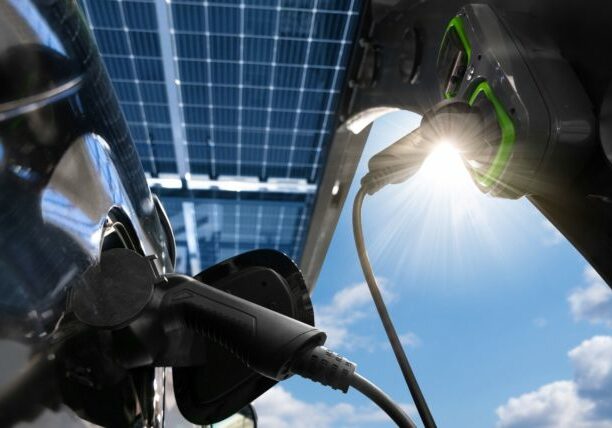January 27, 2014
Trade Missions Critical in Building an Offshore Wind Industry
By Val Stori
One major cost reduction mechanism for US offshore wind project development is minimizing project risk, especially in the construction phase of project development. Total installation costs range between 10-20% of capital costs, so there is potential for cutting costs by minimizing delays and reducing bottlenecks, through efficient staging, and with equipment tailored specifically for offshore wind installation. Experienced European offshore wind project developers, who have nearly two decades of experience building supply chains, improving economies of scale, and constructing offshore wind farms, have many cost-cutting lessons to share with the US. In addition, the policies and support structures that countries like the UK and Germany have put in place can be instructive to the US and can help develop a market that attracts commercial investors while minimizing ratepayer impacts. After twenty years of learning-by-doing, many demonstration-scale projects, supply chain bottlenecks, and unstable government support mechanisms, the European offshore wind industry is finally a true industry in the commercial stage. The US can, and should, learn from the European experience to leapfrog over the pre-commercial phase.
Perhaps one of the most cost-effective measures US developers can take to reduce project risk and installation costs is partnership with experienced developers. Reducing risks and construction time can have a significant impact on overall project costs. In Europe, growing professionalism in the industry—mainly market entry by large construction companies and major utilities, has led to faster installation times and improved methods. These major players have developed and improved techniques and equipment specific to offshore wind development, which has led to speedier installations and thus, reduced costs. In fact, leading utility and major offshore wind developer DONG Energy predicts that a cost reduction of 10-20% by 2017 is realistic; companies like these are focused on streamlining, improving efficiencies, and incentivizing OEMs and suppliers to reduce costs. Through partnerships, a US developer can gain valuable experience and tap the wealth of knowledge that European developers have already amassed. To spur the development of offshore wind in the US and to gain public acceptance through more acceptable power prices, the US must take advantage not only of European know-how, but also of the European supply chain.
State renewable energy agencies and local economic development councils who already are heavily invested in offshore wind-related infrastructure and who are looking to position themselves as leading US offshore wind players, are engaging with key European developers and political leaders through international trade missions. In 2013, two CESA members travelled to Germany and Denmark along with a contingent from economic development councils and port authorities as part of international trade missions. Both contingents returned to the US cognizant of the major challenges that lie ahead in building a domestic industry, yet aware of the tremendous opportunities for growth. After touring some of the world’s largest wind farms, visiting offshore wind-dedicated ports, and speaking with turbine OEMs, the US representatives returned home to champion for offshore wind. In the words of New Bedford Mayor Jon Mitchell, who travelled to Europe with the Massachusetts Clean Energy Center, “it is hard to avoid the adage that seeing is believing.”
But what other than awe at the industry’s huge potential is to be gleaned from these international missions? Beyond the fact finding and knowledge sharing lies an integral component of these trade missions—the opportunity to build relationships and establish joint ventures. Dedicated matchmaking sessions and networking opportunities are critical to kick-starting efficient development off US shores. The opportunity to partner—whether a US contractor partners to operate in Europe and brings the experience back or a US project partners with an experienced European contractor—enables us to benefit from Europe’s learning curve. We do not have to reinvent the wheel every step of the way. In fact, to do so would likely be cost prohibitive at this point in the game. The US currently does not have the volume or the guaranteed market to develop a robust supply chain or to justify investment in domestic ventures that would support the nascent-at-best industry. Even in Germany, where nearly 400MW of offshore wind were installed in 2013, factories sit idle when demand is low despite investment of an estimated $1.3 billion for specialized ports and factories. Even though economic development and job creation are key goals for the states interested in building an offshore wind industry, until a sufficient pipeline of projects is established along the US Atlantic coast, the first few projects will be supplied by European manufacturers.
European developers and manufacturers are eager to work on this side of the Atlantic. Recently, the Maryland Energy Administration was invited to attend the annual European Wind Energy Association’s conference at the request of European turbine manufacturers who recognize that Maryland may be the first state to deploy a large-scale project in the US. And in late December, Cape Wind contracted with Siemens to supply the project with Siemens’ 3.6MW turbines and an electrical services platform. The platform, in fact, has been contracted out by Siemens to Cianbro Corp.—a Massachusetts-based company, that will construct the offshore substation at its manufacturing facility in Brewer, Maine. While it may be too early for European developers to establish significant facilities in the US at this stage, they are looking for project partners and prime locations to invest—especially if states set offshore wind targets. It could be a win-win situation. Local content is lacking and would be a substantial hurdle causing major bottlenecks if US offshore developers chose to go “local only.” Overseas cooperation with local industry will be key in getting the US offshore wind industry up and running, while providing a large opportunity for the established European players to get involved in US developments.
But it’s not only Europe that has the offshore wind know-how. Japan has quickly entered the world stage with the deployment of several floating wind turbines and major plans to diversify its power grid with over 1000MW of floating offshore power. This development caught the eyes of Governor Patrick’s administration, who organized a Massachusetts-Asia Innovation Partnership Mission with industry leaders and state agencies who traveled to Japan in December to expand opportunities for economic development and job creation in cleantech, among other sectors. The Massachusetts Clean Energy Center (MassCEC), which attended the Mission, met with the companies developing and financing Japan’s new offshore wind industry, mainly Marubeni Corporation, Mitsubishi, and Hitachi, to learn best practices.
MassCEC also participated in an international trade mission to Germany and Denmark organized by the City of New Bedford, MA to meet with industry, academic, and government leaders. The Mission visited major port cities in Northern Germany and found the cities’ histories to be similar to New Bedford’s—a once-vibrant coastal town with a booming fishing industry. For MassCEC, the opportunity to meet Siemens executives and establish relationships with this major offshore wind player was significant. The meetings presented an opportunity to speak to how Massachusetts was gearing up to be the hub for offshore wind development on the Atlantic coast. The City of New Bedford also had opportunities to present before German offshore wind industry leaders; these presentations led to the official signing of a “Sister City Agreement” between New Bedford and the major port town of Cuxhaven, Germany. The agreement promotes the exchange of information and joint ventures or commercial arrangements to promote jobs.
Some of the best practices learned on the recent international trade missions for offshore wind include:
- Experience and efficiency matter: According to the Great Lakes Wind Network, several phases of Lean Manufacturing have allowed Siemens to reduce their costs, improve quality, and reduce delivery time.
- Supporting infrastructure must be in place: The US teams witnessed the magnitude of offshore wind foundations, platforms, and towers, which must be transported to the port facility. Heavy duty roads and/or rail lines are needed to transport materials from the port to the quayside.
- Offshore wind vessels are expensive and in high demand: Their time at port must be well-utilized and efficient. Components must be ready to be transferred onto the installation vessels as they arrive. Efficient staging is critical for maximizing efficiency.
- Offshore wind is an expensive proposition: One project cannot justify the development of specialized ports, associated infrastructure, and a specialized local supply chain. A pipeline of projects is needed to support economic growth and investment.
Until ambitious offshore wind targets are set along the Atlantic coast, and policies and incentives put in place to support offshore wind and its associated supply chain, offshore wind development will remain as a one-off industry. Until this nascent industry is on its feet, we would do well to partner with European manufacturers to drive down costs and ensure efficient project completion.
***
For more information, you may be interested in reading the following articles:














